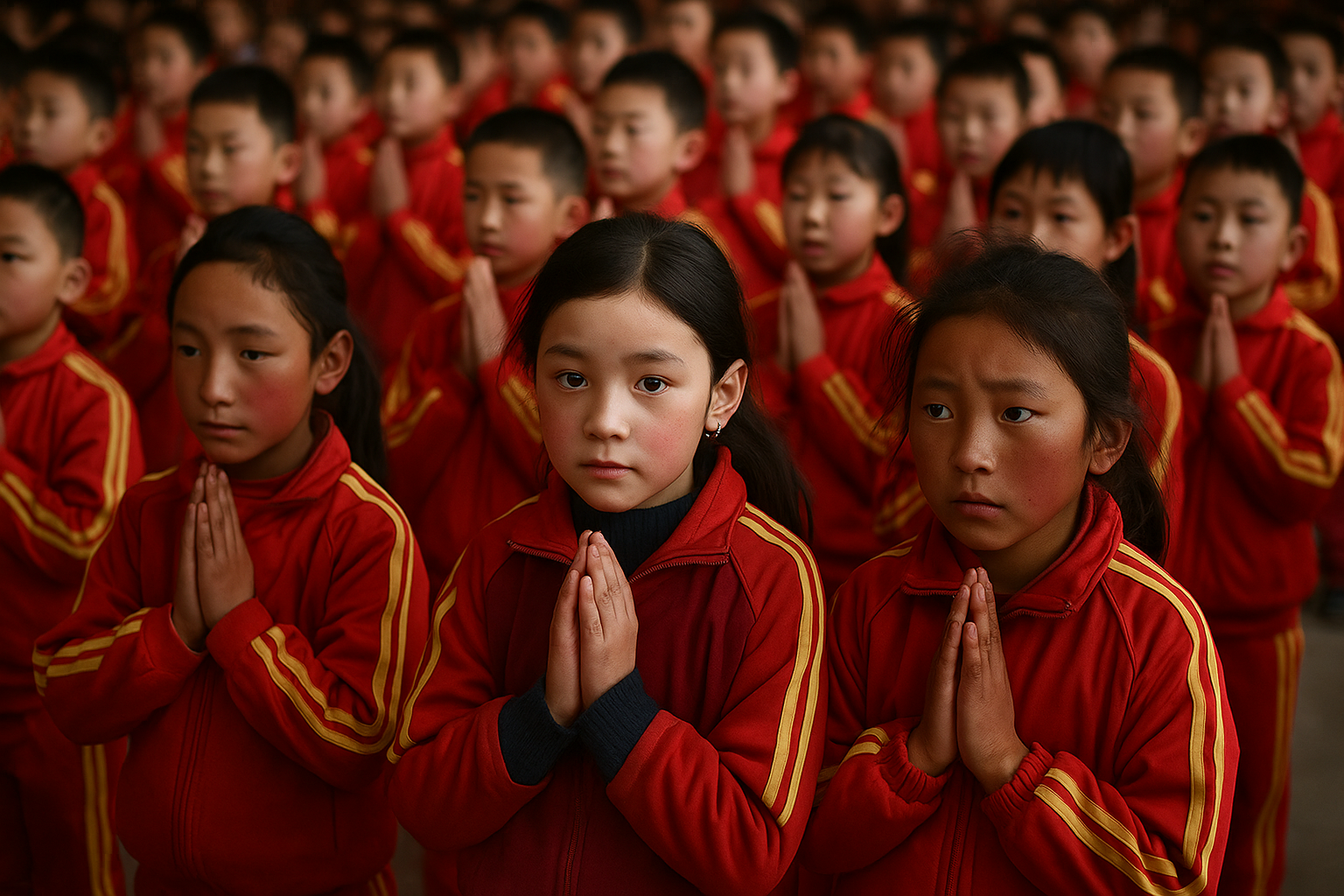Chinese government-run boarding schools in Tibet are systematically eroding the Tibetan identity by forcibly separating nearly one million children from their families and immersing them in a Mandarin-only curriculum that promotes assimilation with the Han Chinese majority. International human rights groups and UN experts have condemned the practice, calling it a form of cultural genocide.
Tibetan children as young as 4 years old are sent to boarding schools, often located far from their rural homes. The move is not optional; authorities close smaller, local schools and pressure parents to send their children away under the guise of “educational advancement”. This separation severely damages familial bonds and prevents the intergenerational transmission of language, religion, and cultural knowledge.
In these schools, the instruction and environment are almost exclusively centred on Han Chinese culture. While classes are taught in Mandarin, Tibetan language, history, and culture are marginalised or excluded from the curriculum. This leaves many children unable to communicate effectively with their parents and grandparents in their native tongue.
The curriculum promotes Chinese Communist Party (CCP) ideology and fosters loyalty to the Chinese state. This is a key part of China’s “sinicisation” campaign, an effort to suppress non-Han cultures. Tibetan Buddhism is also largely excluded from the education system and replaced with atheist teachings. To eliminate alternatives, the Chinese government has forcibly shut down private and monastery-run schools that teach in the Tibetan language, further cementing the state’s monopoly over the education system.
Consequences for Tibetan children and culture
Forced separation during formative years has profound long-term consequences for children, including emotional distress and identity confusion. The isolation and loss of community bonds prevent the development of a strong Tibetan identity. As a result of these policies, many Tibetan children grow up alienated from their cultural roots. Many cannot fit into either Chinese or Tibetan society, creating a sense of being culturally displaced.
The near-exclusive use of Mandarin in schools means that many children lose their fluency in Tibetan. This linguistic shift is a critical component of the cultural erasure, as language is a cornerstone of identity.
International bodies, including UN human rights experts, have condemned China’s practices as a violation of the human rights of indigenous peoples and children. They have called on China to abolish the boarding school system and stop its assimilation policies.
According to these UN experts, around a million children of the Tibetan minority were being affected by Chinese government policies “aimed at assimilating Tibetan people culturally, religiously and linguistically through a residential school system”.
While residential schools exist in other parts of China, their share in areas populated by the Tibetan minority is much higher, and this percentage has been increasing in recent years. While on the national level the percentage of boarding students is more than 20%, information received points to the vast majority of Tibetan children in residential schools, almost one million children in total.
This increase in the number of boarding Tibetan students is achieved by the closure of rural schools in areas that tend to be populated by Tibetans, and their replacement by township or county-level schools, which almost exclusively use Putonghua in teaching and communication, and usually require children to board.
UN experts have stated that the policies run contrary to the prohibition of discrimination and the rights to education, linguistic and cultural rights, freedom of religion or belief and other minority rights of the Tibetan people.
In August 2021, the Central Conference on Ethnic Affairs called on all ethnic groups to be guided to always place the interests of the Chinese nation above all else. The experts sent a communication to the Government of China on 11 November 2022 and remain in contact with the authorities regarding the issue.
Military schools in India vs China
Although India too has the presence of military boarding schools, there are notable differences in how military-run schools in India and China engage with culture, shaped by their respective national ideologies and social structures. In India, army schools operate with a focus on national integration and cultural diversity, while in China, the system emphasises state-mandated patriotic and political indoctrination.
Army Public Schools (APS) and Rashtriya Military Schools (RMS) in India primarily serve the children of armed forces personnel, but their curriculum and ethos reflect India’s “unity in diversity” philosophy. These schools foster an inclusive environment where students from different linguistic, religious, and cultural backgrounds are taught to coexist and celebrate each other’s traditions. This mirrors the makeup of the Indian Army itself, which is a microcosm of India’s diverse society. China can do well by taking a leaf out of India’s military schools.

